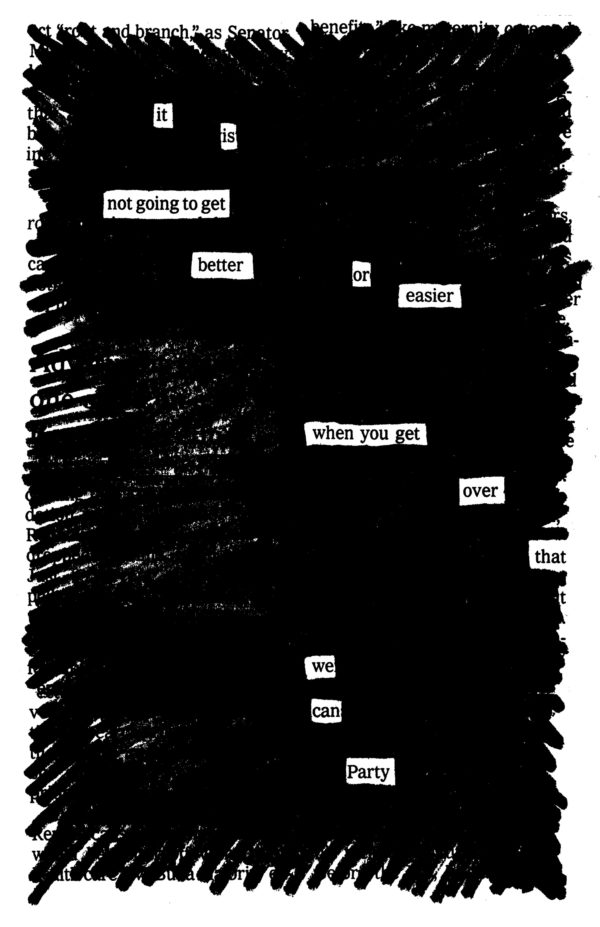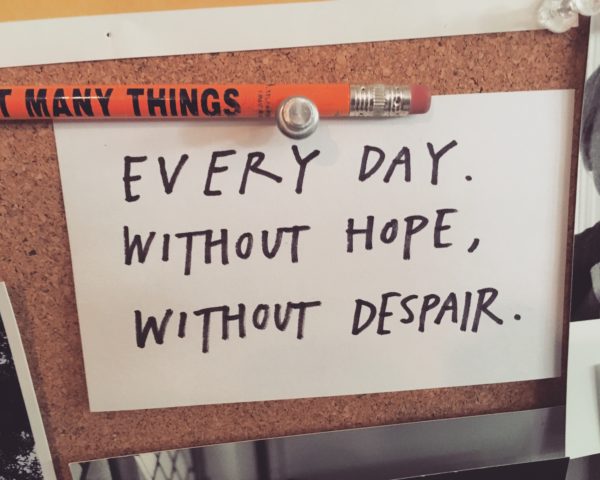
Raymond Carver loved to quote Isak Dinesen, who said that she wrote a little every day, without hope and without despair.
“Someday,” he wrote, “I’ll put that on a three-by-five-card and tape it to the wall beside my desk.”
I stole his idea for my bliss station:
EVERY DAY, WITHOUT HOPE AND WITHOUT DESPAIR.
His widow, the poet Tess Gallagher, said these words were a “quiet banner of determination” that flew over the last decade of his life.
They are now my banner, and they can also be yours, if you like.
Carver, when asked about the impact he thought his work would have on people, was extremely skeptical about the possibility that his stories and poems would profoundly change the world or save anything in it. Of his art, he said:
It doesn’t have to do anything. It just has to be there for the fierce pleasure we take in doing it, and the different kind of pleasure that’s taken in reading something that’s durable and made to last, as well as beautiful in and of itself. Something that throws off these sparks—a persistent and steady glow, however dim.
That “steady glow, however dim” reminds me of the gospel song we used to sing in Sunday School: “This little light of mine, I’m gonna let it shine.” It also reminds me of Edith Wharton: “There are two ways of spreading light: to be the candle or the mirror that reflects it.” (If you don’t have your own light, you can reflect someone else’s — just don’t be Human Vantablack.)
I, too, am skeptical that my work will actually make any kind of lasting impact. To believe such a thing, when one considers the span of cosmic time, seems downright delusional. And, frankly, I no longer need my work to change anything — I just know I need to do it.
I often think of my favorite line from Groundhog Day:
“What would you do if you were stuck in one place and every day was exactly the same, and nothing that you did mattered?”
How you answer that question is your art.
